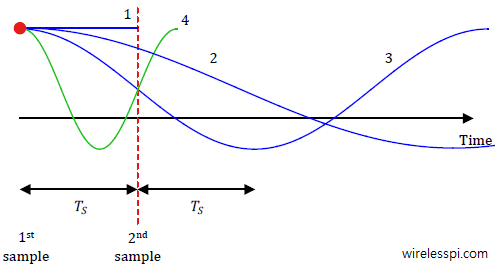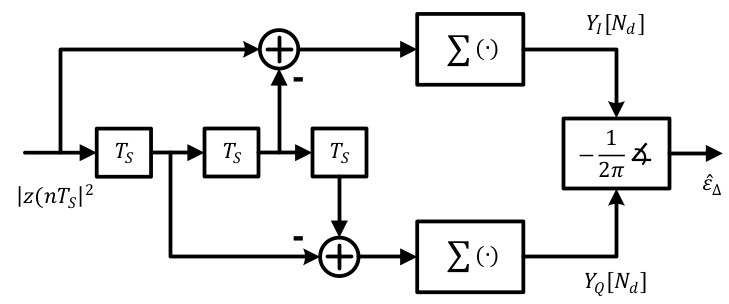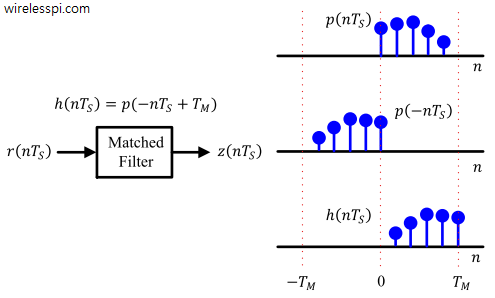A system is time-invariant if shifting the input sequence on time axis leads to an equivalent shift of the output sequence along the time axis, with no other changes.
Continue reading
Discover the Joy of DSP, SDRs and Wireless Communications

A system is time-invariant if shifting the input sequence on time axis leads to an equivalent shift of the output sequence along the time axis, with no other changes.
Continue reading
Remember that in the article on correlation, we discussed that correlation of a signal with proper normalization is maximum with itself and lesser for all other signals. Since the number of possible signals is limited in a digital communication system, we can use the correlation between incoming signal $r(nT_S)$ and possible choices $s_0(nT_S)$ and $s_1(nT_S)$ in a digital receiver. Consequently, a decision can be made in favor of the one with higher correlation. It turns out that the theory of maximum likelihood detection formalizes this conclusion that it is the optimum receiver in terms of minimizing the probability of error.
Continue reading
Most signals of our interest — wireless communication waveforms — are continuous-time as they have to travel through a real wireless channel. To process such a signal using digital signal processing techniques, the signal must be converted into a sequence of numbers. This can be done through the process of periodic sampling. From Continuous to Discrete Time Consider a band-limited continuous-time signal $s(t)$ and its frequency domain representation $S(F)$ with bandwidth $B$, shown in the above figure. A discrete-time signal $s[n]$ can be obtained by taking samples of $s(t)$ at equal intervals of $T_S$ seconds. This process is shown in
Continue reading
We have seen before how a symbol timing offset severely impacts the constellation of the received symbols. Therefore, symbol timing recovery is one of the most crucial jobs of a digital communications receiver. In the days of analog clock recovery, a timing error detector provided the instant to sample the Rx waveform at 1 sample/symbol at the maximum eye opening. However, discrete-time processing opened the doors for better timing recovery schemes as an ever increasing number of transistors within the same area consistently keeps bringing the digital processing cost down. Consequently, the use of analog circuits to control the timing
Continue reading
Now we turn out attention towards a topic that causes a lot of confusion for communications and DSP learners: what is the difference between a matched filter and a correlator in a communications receiver? Let us start with the definition of a correlator: A correlator is a device that performs correlation of a received signal with its template within a given window of time. In our context, that window of time is the symbol duration, $T_M$. So a correlator performs the following operations. It takes this sample-by-sample product and sums them together. Next, it samples the output of this accumulation
Continue reading